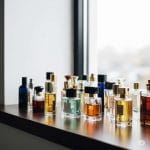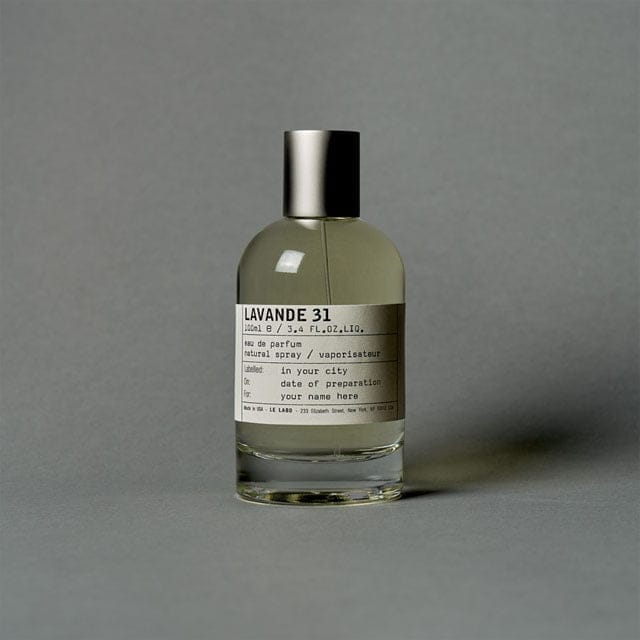Luxury fragrances are more than just scents; they’re personal statements, mood enhancers, and often, hefty investments. Among the most iconic of these is Le Labo Santal 33. With its smoky, woody profile and gender-neutral appeal, Santal 33 has achieved cult status in both fashion and fragrance communities. But with popularity comes imitation.
The global demand for Santal 33 has led to a surge in counterfeit products, especially across online platforms and unauthorized resellers. These fakes don’t just lack authenticity; they often include harmful ingredients, questionable craftsmanship, and poor longevity.
In this comprehensive guide, we’ll teach you how to confidently spot a fake Le Labo Santal 33. From packaging to scent profile, every detail matters when distinguishing the real deal from an imposter.
1. Understanding Le Labo’s Brand Identity
Before diving into detection, let’s understand why Le Labo is so widely counterfeited:
- High Market Value: Prices range from $100 to over $700 depending on the bottle size, making it a lucrative target for counterfeiters.
- Minimalist Packaging: Its simple design and typewritten labels are easy for forgers to replicate at a glance.
- Personalization Factor: Each bottle is made-to-order and labeled with the date and location of formulation, plus the customer’s name if bought in-store or online directly.
- Cult Appeal: Endorsed by celebrities, influencers, and niche fragrance lovers, Santal 33 carries cultural cachet.
2. The Packaging: Start With the Box
a. Box Material and Construction
- Authentic: Comes in a sturdy, natural-toned kraft box with clean folding, crisp edges, and a solid feel.
- Fake: Boxes often feel flimsy, are too yellow or dark, and may be unevenly glued or have unclear folds.
b. External Label Accuracy
- Real Labels feature clear, sharp printing with details such as:
- Fragrance name: “Santal 33”
- Volume (e.g., 50ml, 100ml)
- Personalized text (if applicable)
- Formulation date and store location
- Fake Labels might include:
- Spelling mistakes (e.g., “Santal33” without a space, or “Santel”)
- Incorrect fonts
- Low-resolution printing
- No customization options
c. Barcode and Batch Number
- Authentic Products include a batch code that matches the bottle and is verifiable using online batch checkers.
- Counterfeit Products often omit this code, or the code is meaningless and untrackable.
3. Inspecting the Bottle: Precision Matters
a. Weight and Feel
- Genuine Le Labo bottles are heavy with thick glass and a quality finish.
- Fake versions tend to be lighter, with bubbles in the glass, uneven texture, or a cheap feel.
b. Cap and Sprayer
- Authentic Cap: Metallic and magnetic. It clicks tightly and is weighty.
- Fake Cap: Usually plastic or low-grade metal. Often loose-fitting or poorly aligned.
- Sprayer: Real Santal 33 delivers a smooth, fine mist. Counterfeit versions may sputter, leak, or produce a heavy, uneven spray.
4. Examining the Label on the Bottle
Le Labo’s bottle labels are printed in a typewriter-style font, giving a vintage, apothecary-like vibe. Here’s what to watch for:
a. Font and Spacing
- Real: Uses a monospaced font with uniform spacing. No bold or italic inconsistencies.
- Fake: May use modern fonts like Arial or Helvetica. Spacing is often off, and the label may appear skewed.
b. Placement
- Authentic: Label is centered, straight, and precisely aligned with the bottle.
- Fake: Often crooked, peeling, or unevenly applied.
c. Personalization Text
- Le Labo allows for personalization (your name or a note).
- Counterfeiters might add gibberish, get the format wrong, or skip personalization altogether.
5. The Fragrance: Trust Your Nose
Ultimately, the best way to detect a fake is by smelling it. Here’s how the real Santal 33 should behave:
a. Authentic Fragrance Profile
- Top Notes: Cardamom, violet, iris
- Middle Notes: Leather, papyrus
- Base Notes: Sandalwood, cedarwood, amber, musk
Real Santal 33 opens fresh and spicy with cardamom and violet, evolves into a warm leathery heart, and finishes with creamy sandalwood and subtle musk. It’s smooth, balanced, and long-lasting (8+ hours).
b. Common Traits in Fakes
- Harsh alcohol smell up front
- Overly sweet, synthetic, or sour notes
- No development from top to base notes
- Poor longevity (1-2 hours)
- Smells like a generic cologne or body spray
c. Skin Test
Spray it on your wrist and wait. Real Santal 33 evolves over time. Fakes typically smell flat or disappear quickly.
6. Price Points and Red Flags
a. Know the Retail Pricing (2025 Updated)
- 15ml: ~$100
- 50ml: ~$230
- 100ml: ~$330
- 500ml: ~$700
Check Prices in Amazon
If someone is offering a full 100ml bottle for $60 or less, that’s a clear warning sign. Authentic luxury never comes cheap.
b. Where to Buy Safely
- Le Labo Official Website
- Official Boutiques (e.g., Le Labo Nolita, Le Labo Paris)
- Authorized Retailers like Nordstrom, Sephora, Harrods, Selfridges
Avoid purchasing from:
- Third-party Amazon or eBay sellers with poor feedback
- Instagram or TikTok resellers
- Discount fragrance websites with no clear return policy
7. Online Marketplaces: What to Watch Out For
If you’re considering a secondhand or reseller platform, protect yourself by following these tips:
a. Request Detailed Photos
- Close-ups of the label, box, cap, and sprayer
- Picture of the batch code
- Image of the liquid color (fakes may be too light or too dark)
b. Ask for Purchase Proof
- Receipt or invoice from an authorized retailer
- Screenshots of the original order confirmation
c. Use Safe Payment Methods
Avoid wire transfers or peer-to-peer apps. Use PayPal or credit cards that offer buyer protection.
8. Batch Code Verification
Every real bottle of Le Labo has a batch code, usually printed on the bottom of the bottle and on the outer box.
a. Tools You Can Use
- CheckFresh.com
- CheckCosmetic.net
These websites can validate whether a batch number corresponds to a real production date and factory.
b. What If There Is No Code?
That’s a strong sign it’s fake. All authentic Le Labo products include a batch code.
9. Test With a Known Authentic
If possible, compare your suspect bottle with a genuine Le Labo product. Differences will often jump out immediately:
- Glass weight and finish
- Label spacing and font
- Scent development
- Mist quality from the sprayer
10. Le Labo’s Customer Service Can Help
If you’re still unsure:
- Visit a Le Labo boutique and ask for a comparison
- Email photos to Le Labo’s customer service team
- They can often help confirm authenticity
Include:
- Batch code
- Purchase source
- Close-up pictures of packaging and bottle
11. Health and Safety Concerns
Buying a counterfeit fragrance isn’t just a waste of money; it can be dangerous:
- Fake perfumes often contain industrial alcohol or methanol
- May cause allergic reactions or rashes
- Risk of respiratory irritation
Authentic Le Labo uses vegan, cruelty-free, and sustainable ingredients—something fakes can never replicate.
12. Ethical and Environmental Reasons to Avoid Fakes
When you purchase a counterfeit product, you’re potentially funding:
- Child labor
- Organized crime rings
- Unsustainable production methods
Supporting genuine brands helps uphold ethical labor practices, environmental standards, and innovation in perfumery.
13. Quick Reference Checklist
Here’s a final checklist to help you make the right decision:
- Quality kraft box with correct labeling
- Magnetic, metal cap that clicks tightly
- Clean, centered label with correct font and spacing
- Clear, fine mist from the sprayer
- Fragrance evolves over time and lasts 6-8+ hours
- Batch code is present and verifiable
- Purchased from a verified or official source
- Price is consistent with market value
Conclusion: Buy Smart, Smell Better
Le Labo Santal 33 is a masterpiece of modern perfumery—a fragrance that deserves to be experienced in its true, authentic form. Counterfeits might promise savings, but they offer none of the beauty, safety, or longevity of the real thing.
Armed with the knowledge from this guide, you can now shop smarter and ensure that your investment is protected. Whether you’re a fragrance enthusiast or a first-time buyer, trust your eyes, your nose, and your instincts.
Stay informed. Stay authentic. And let your scent tell the real story.






